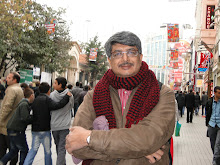This is the ultimate truth that we live through but often realise a little late in life. This is the relentless march of time through the ages.
There is an element of mystery as our limited human comprehension cannot estimate its commencement or its possible end. The time dimension gets even more warped when we add the space dimension to it. Its span encompasses a nano second to billions of light years. This is where distance is measured as the quantum of time light takes to bridge that vast cosmic void.
Coming to a more earthly level, passage of time represents those years flying by, it denotes our ageing, change, progress or otherwise. We gave ourselves a calendar to make sense of this circular movement of time.
This brings us to the three dimensions of past, present and the future. We go through these dimensions with a firm eye on the future hoping for a brighter tomorrow. Wise men have always counselled us that we make our own future. It is said, we should take care of the present and future automatically takes care of itself. Our today reflects the way we lived yesterday. We are often wont to repeat our mistakes and live as we did yesterday, thus condemning our tomorrow.
Is it not time that we break this vicious cycle and break free of such enslaving patterns? Come on....let us consciously endeavour to usher in a different tomorrow.
On this day as the year 2009 is on verge of becoming history, let us create 2010 and the years beyond, a different world. I wish every one the very best and urge them to create a golden future for themselves.
































































